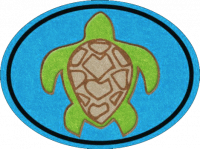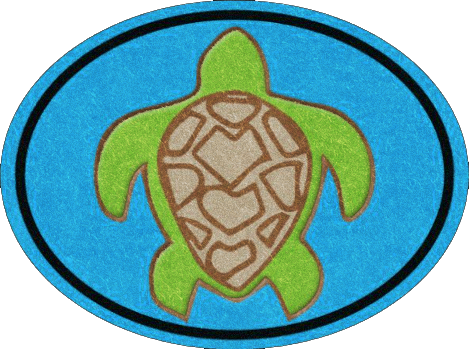Difference between revisions of "AY Honors/Sea Turtles/Answer Key"
(Created page with "{{HonorSubpage}} <section begin="Body" /> {{ansreq|page={{#titleparts:{{PAGENAME}}|2|1}}|num=1}} <noinclude><translate><!--T:7--> </noinclude> <!-- 1. What is the average nu...") |
(Updated in 2023) |
||
| Line 6: | Line 6: | ||
<noinclude><translate><!--T:7--> | <noinclude><translate><!--T:7--> | ||
</noinclude> | </noinclude> | ||
| − | <!-- 1. | + | <!-- 1. Define the following as they relate to Sea Turtles: --> |
<!--T:8--> | <!--T:8--> | ||
<noinclude></translate></noinclude> | <noinclude></translate></noinclude> | ||
| + | |||
| + | {{ansreq|page={{#titleparts:{{PAGENAME}}|2|1}}|num=1a}} | ||
| + | <noinclude><translate></noinclude> | ||
| + | <!-- a. Scutes --> | ||
| + | The scales that make up the upper surface of the carapace. | ||
| + | |||
| + | <noinclude></translate></noinclude> | ||
| + | {{CloseReq}} <!-- 1a --> | ||
| + | |||
| + | {{ansreq|page={{#titleparts:{{PAGENAME}}|2|1}}|num=1b}} | ||
| + | <noinclude><translate></noinclude> | ||
| + | <!-- b. Carapace --> | ||
| + | The upper bony structures of the turtle shell covering the back. | ||
| + | |||
| + | <noinclude></translate></noinclude> | ||
| + | {{CloseReq}} <!-- 1b --> | ||
| + | |||
| + | {{ansreq|page={{#titleparts:{{PAGENAME}}|2|1}}|num=1c}} | ||
| + | <noinclude><translate></noinclude> | ||
| + | <!-- c. Plastron --> | ||
| + | The bones that make up the underside of the shell. | ||
| + | |||
| + | <noinclude></translate></noinclude> | ||
| + | {{CloseReq}} <!-- 1c --> | ||
| + | |||
| + | {{ansreq|page={{#titleparts:{{PAGENAME}}|2|1}}|num=1d}} | ||
| + | <noinclude><translate></noinclude> | ||
| + | <!-- d. Claw --> | ||
| + | The two hooked appendages that are present on the front flippers. | ||
| + | |||
| + | <noinclude></translate></noinclude> | ||
| + | {{CloseReq}} <!-- 1d --> | ||
| + | |||
| + | {{ansreq|page={{#titleparts:{{PAGENAME}}|2|1}}|num=1e}} | ||
| + | <noinclude><translate></noinclude> | ||
| + | <!-- e. Papillae --> | ||
| + | The backwards facing spines in the turtles oesophagus that allow it to retain food whilst letting water out of its stomach. | ||
| + | |||
| + | <noinclude></translate></noinclude> | ||
| + | {{CloseReq}} <!-- 1e --> | ||
| + | |||
| + | {{ansreq|page={{#titleparts:{{PAGENAME}}|2|1}}|num=1f}} | ||
| + | <noinclude><translate></noinclude> | ||
| + | <!-- f. Salt Gland --> | ||
| + | The backwards facing spines in the turtles oesophagus that allow it to retain food whilst letting water out of its stomach. | ||
| + | |||
| + | <noinclude></translate></noinclude> | ||
| + | {{CloseReq}} <!-- 1f --> | ||
| + | |||
| + | {{ansreq|page={{#titleparts:{{PAGENAME}}|2|1}}|num=1g}} | ||
| + | <noinclude><translate></noinclude> | ||
| + | <!-- g. Clutch --> | ||
| + | A group of eggs in a single nest. | ||
| + | |||
| + | <noinclude></translate></noinclude> | ||
| + | {{CloseReq}} <!-- 1g --> | ||
{{CloseReq}} <!-- 1 --> | {{CloseReq}} <!-- 1 --> | ||
| Line 15: | Line 71: | ||
<noinclude><translate><!--T:9--> | <noinclude><translate><!--T:9--> | ||
</noinclude> | </noinclude> | ||
| − | <!-- 2. | + | <!-- 2. Name the six species of Sea Turtle (also known as Marine Turtles) found in Australian waters. --> |
<!--T:10--> | <!--T:10--> | ||
| Line 24: | Line 80: | ||
<noinclude><translate><!--T:11--> | <noinclude><translate><!--T:11--> | ||
</noinclude> | </noinclude> | ||
| − | <!-- 3. | + | <!-- 3. Choose two of the Australian species of Sea Turtles and describe the following for each: --> |
<!--T:6--> | <!--T:6--> | ||
| Line 33: | Line 89: | ||
<noinclude><translate><!--T:12--> | <noinclude><translate><!--T:12--> | ||
</noinclude> | </noinclude> | ||
| − | <!-- 4. What | + | <!-- 4. What are two main things that will disturb a nesting turtle? --> |
| + | Light and movement. | ||
<!--T:13--> | <!--T:13--> | ||
| Line 42: | Line 99: | ||
<noinclude><translate><!--T:14--> | <noinclude><translate><!--T:14--> | ||
</noinclude> | </noinclude> | ||
| − | <!-- 5. | + | <!-- 5. When might the Rangers at Mon Repos, Qld and at other Marine parks, relocate turtle eggs? --> |
| + | When they are laid below the high tide line, when the nest is too shallow, when temperatures are predicted to be high, or if the nest becomes exposed with dune erosion. | ||
<!--T:15--> | <!--T:15--> | ||
| Line 51: | Line 109: | ||
<noinclude><translate><!--T:16--> | <noinclude><translate><!--T:16--> | ||
</noinclude> | </noinclude> | ||
| − | <!-- 6. | + | <!-- 6. At warmer temperatures (above 28°C), do we see male or female hatchlings produced? --> |
| + | Female. | ||
<!--T:17--> | <!--T:17--> | ||
| Line 60: | Line 119: | ||
<noinclude><translate><!--T:18--> | <noinclude><translate><!--T:18--> | ||
</noinclude> | </noinclude> | ||
| − | <!-- 7. | + | <!-- 7. How can you tell adult male and female sea turtles apart? --> |
| + | Male turtles have long tails, female turtles have short tails. Male turtles will only leave the ocean to bask, female turtles lay eggs. | ||
<!--T:19--> | <!--T:19--> | ||
| Line 69: | Line 129: | ||
<noinclude><translate><!--T:20--> | <noinclude><translate><!--T:20--> | ||
</noinclude> | </noinclude> | ||
| − | <!-- 8. | + | <!-- 8. What are the top three human threats to turtle hatchlings? --> |
| + | Artificial light, marine debris/plastic/rubbish, beach modifications such as seawalls, tyre tracks, beach furniture and fishing nets. | ||
<!--T:21--> | <!--T:21--> | ||
| Line 78: | Line 139: | ||
<noinclude><translate><!--T:22--> | <noinclude><translate><!--T:22--> | ||
</noinclude> | </noinclude> | ||
| − | <!-- 9. | + | <!-- 9. What day did God create the animals of the sea, and where in the Bible is it found? --> |
| + | God created all the sea animals on the fifth day. {{Bible link|Genesis 1:20-23}} | ||
<!--T:23--> | <!--T:23--> | ||
| Line 87: | Line 149: | ||
<noinclude><translate><!--T:24--> | <noinclude><translate><!--T:24--> | ||
</noinclude> | </noinclude> | ||
| − | <!-- 10. | + | <!-- 10. Successfully observe Turtles laying eggs at Mon Repos, Qld (or other Marine Parks in your area). If this is not possible, consider viewing/researching/observing videos on Turtles laying eggs. --> |
<!--T:25--> | <!--T:25--> | ||
<noinclude></translate></noinclude> | <noinclude></translate></noinclude> | ||
{{CloseReq}} <!-- 10 --> | {{CloseReq}} <!-- 10 --> | ||
| − | |||
| − | |||
| − | |||
| − | |||
| − | |||
| − | |||
| − | |||
| − | |||
| − | |||
| − | |||
| − | |||
| − | |||
| − | |||
| − | |||
| − | |||
| − | |||
| − | |||
| − | |||
| − | |||
| − | |||
| − | |||
| − | |||
| − | |||
| − | |||
| − | |||
| − | |||
| − | |||
| − | |||
| − | |||
| − | |||
| − | |||
| − | |||
| − | |||
| − | |||
| − | |||
| − | |||
<noinclude><translate></noinclude> | <noinclude><translate></noinclude> | ||
==References== <!--T:34--> | ==References== <!--T:34--> | ||
| + | * [https://pathfinder.org.au/honour/sea-turtles/ Australian Union Sea Turtles Honor] | ||
| + | * [https://www.upwell.org/ Upwell - Protecting Turtles at Sea] | ||
| + | * [https://www.dcceew.gov.au/environment/marine/marine-species/marine-turtles Marine Turtles in Australia] | ||
| + | |||
<noinclude></translate></noinclude> | <noinclude></translate></noinclude> | ||
Revision as of 01:15, 7 September 2025
1
1a
The scales that make up the upper surface of the carapace.
1b
The upper bony structures of the turtle shell covering the back.
1c
The bones that make up the underside of the shell.
1d
The two hooked appendages that are present on the front flippers.
1e
The backwards facing spines in the turtles oesophagus that allow it to retain food whilst letting water out of its stomach.
1f
The backwards facing spines in the turtles oesophagus that allow it to retain food whilst letting water out of its stomach.
1g
A group of eggs in a single nest.
2
3
- What is the scientific name?
- Where does it live?
- What are its identifying features?
- How many eggs does it lay in an average clutch?
- What age does it reach maturity/start to lay eggs?
- How long do its eggs incubate?
- On average how many clutches will it lay in a season?
- How long can it hold its breath when active?
4
Light and movement.
5
When they are laid below the high tide line, when the nest is too shallow, when temperatures are predicted to be high, or if the nest becomes exposed with dune erosion.
6
Female.
7
Male turtles have long tails, female turtles have short tails. Male turtles will only leave the ocean to bask, female turtles lay eggs.
8
Artificial light, marine debris/plastic/rubbish, beach modifications such as seawalls, tyre tracks, beach furniture and fishing nets.
9
God created all the sea animals on the fifth day. Genesis 1:20-23
10
References



